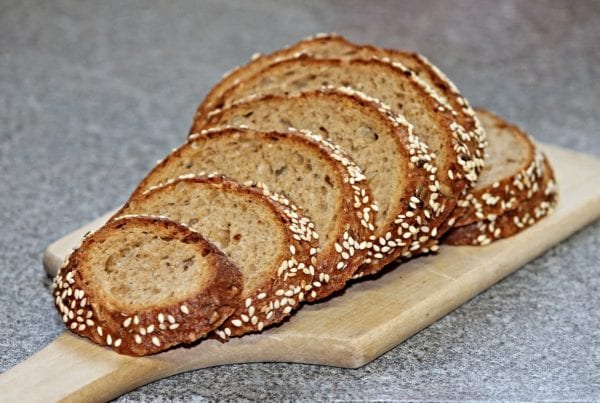The microbiota in our gut are our best “frenemies”. That’s because we have this amazing eco system within our guts that acts like a double edges sword; our microbiome can promote immune and metabolic health, but it can also promote inflammation, when triggered by ‘invaders’ (e.g. allergens, pollen, dust).
The hundreds of trillions of microbes that are found in the human body are concentrated specifically within skin and mucosal surfaces (i.e. Gastro and respiratory tracts. There is a very complex network of immunological interactions that take place in these tracts in order for our immune system to be able to distinguish between “good” and “bad” microbes. These highly controlled mechanisms must be able to discern when immune tolerance is required or when effective attacks against pathogens are necessary. However, in many westernised countries, there have been a number of imbalances in the interactions between the microbiome and immune cells, that has resulted in exacerbated allergic responses and asthma in both animal models and humans.
For many people, the start of Spring is a happy time. The blossoms are out, the days are warmer and the smell of summer is on its way. But for 4.5 million Australians (nearly 1 in 5), the arrival of Spring means loading up on hay fever medication, staying indoors and keeping tissues nearby.
 For almost three decades, a growing body of research has linked the increases in asthma and allergy rates to ‘the hygiene hypothesis’1 – the idea that our modern urban living environments have become too sterile and germ-free, leading our immune systems to become imbalanced and reactive. 2
For almost three decades, a growing body of research has linked the increases in asthma and allergy rates to ‘the hygiene hypothesis’1 – the idea that our modern urban living environments have become too sterile and germ-free, leading our immune systems to become imbalanced and reactive. 2
The early life opportunity
When it comes to allergy and asthma, researchers believe that most of the protection is conferred very early in life, starting with the development of the foetus in the womb where beneficial microbes may help to “train” the immune system. Contrary to what was previously hypothesizes, we now know that babies are not born with a sterile gut, and the stability and diversity of the gut microbiome increases during the first 3 years of life, with various factors influencing this development including mode of birth delivery, breast or bottle feeding, microbial environment (e.g. living on a farm or in a city, dogs in the house or no dogs) and antibiotic use. 3, 4, 5, 6, 7
A 2016 study from the University of California San Francisco found that babies who were lacking particular gut microbes at one month old were three times more likely to develop allergic reactions by age 2, and asthma by age 4. The paper demonstrates that the perturbed microbial ecosystem present in these at-risk babies produces molecules that reduce the abundance of a key type of immune cell known to help prevent allergy. The researchers surmise that having fewer of these cells leads to a hyperactive immune system and eventually to chronic asthmatic inflammation of the lungs. 8
The microbiome in allergy and asthma
It was previously thought that healthy human lung tissue was sterile, but in the last decade, studies have shown that the respiratory mucosa has its own microbial population. As it happens with the gut microbiota, the airways microbiome also develops very early in life and is influenced by the number of microbes in the environment, age, health status, and birth mode. Children raised in farms or who live with animals (e.g. dogs or cats) are exposed to a higher microbial diversity in house dust, which leads to higher nasal microbiome diversity and less risk of asthma and respiratory allergies (e.g. Hayfever)
People with altered gut and lung microbiomes could revert these imbalances through the use of pre and probiotics to support restoration. Unfortunately, it is not as simple as adding a whole lot of pre and probiotics to a capsule and simply swallowing a magical pill. The inflammatory responses experienced by asthma and hay fever sufferers is influenced by a multitude of factors including the environment, nutrition, as well as the status of the gut and respiratory microbiome. It will be necessary to determine if variations in the microbiome are the cause or effect of allergies and asthma, and longitudinal studies are essential to control for different confounding factors. The ultimate goal is to understand whether aspects of the microbiome are linked to disease and whether manipulation of the microbiome will be useful to preserve lung function, prevent, and treat allergies.
And in the meantime, the good news is that the for those who suffer from Spring time sniffles, this hay fever season is likely to be less severe as a result of Australia’s drier-than-average winter season.
Yours in good health,

Teri Lichtenstein (APD)
The Healthy Grain Nutrition Ambassador
References:
Okada H et al. The ‘hygiene hypothesis’ for autoimmune and allergic diseases: an update. Clin Exp Immunol. 2010 Apr; 160(1): 1–9.
West CE et al. The gut microbiota and inflammatory noncommunicable diseases: associations and potentials for gut microbiota therapies. J Allergy Clin Immunol. 2015 Jan; 135(1):3-13.
Lozupone CA et al. Diversity, stability and resilience of the human gut microbiota. Diversity, stability and resilience of the human gut microbiota. 2012 Sep 13; 489(7415):220-30.
Dominguez-Bello MG at al. Delivery mode shapes the acquisition and structure of the initial microbiota across multiple body habitats in newborns. Proc Natl Acad Sci U S A. 2010 Jun 29; 107(26):11971-5.
Yatsunenko T, Rey FE et a. Human gut microbiome viewed across age and geography. 2012 May 9; 486(7402):222-7.
Harmsen HJ et al. Analysis of intestinal flora development in breast-fed and formula-fed infants by using molecular identification and detection methods. J Pediatr Gastroenterol Nutr. 2000 Jan; 30(1):61-7.
Tanaka S et al. Influence of antibiotic exposure in the early postnatal period on the development of intestinal microbiota. FEMS Immunol Med Microbiol. 2009 Jun; 56(1):80-7.
Fujimura KE et al. Neonatal gut microbiota associates with childhood multisensitized atopy and T cell differentiation. Nature Medicine volume 22, pages 1187–1191 (2016).
Intended as general advice only. Consult your health care professional to discuss any specific concerns.





